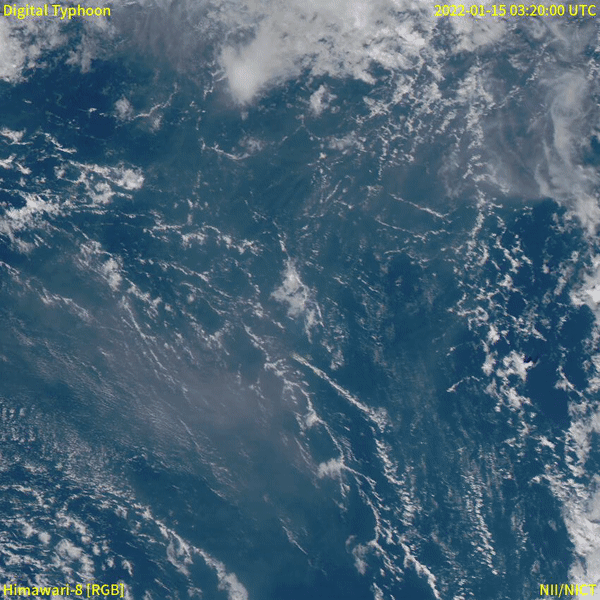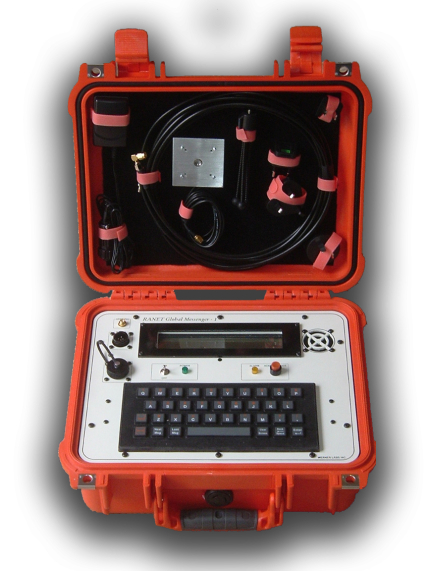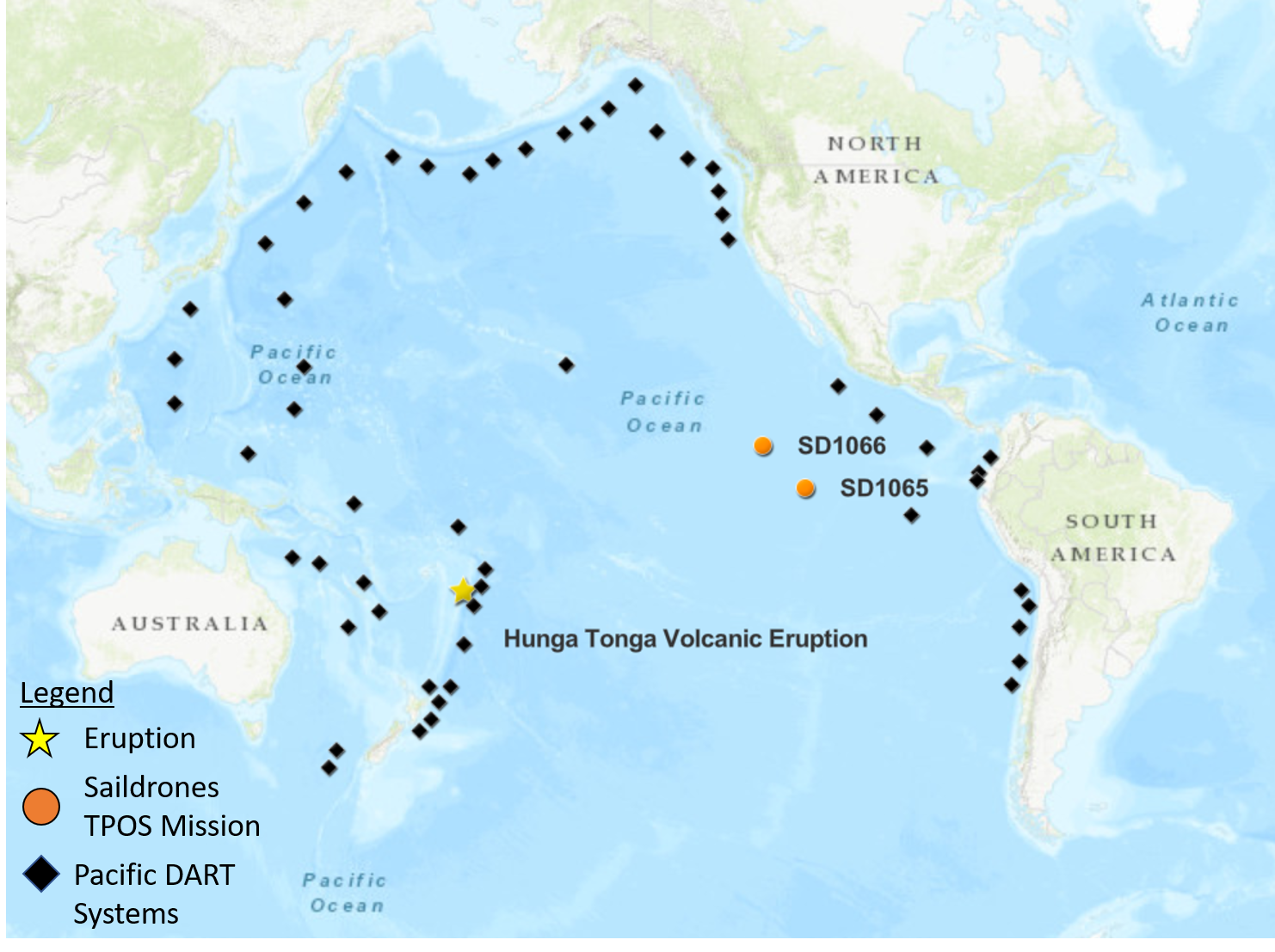Ripple Effect: What the Tonga Eruption Could Mean for Tsunami Research
Special Stories
25 Feb 2022 2:00 AM
[On January 15, 2022 at 4:27 GMT, a significant tsunami was observed across the Pacific basin resulting from the undersea volcanic eruption in the Tonga Islands region. NOAA’s Center for Operational Oceanographic Products and Services (CO-OPS) first observed the tsunami wave at its station in Pago Pago, American Samoa, less than an hour later. The height of the wave reached approximately 1.8 feet. Shown here: Satellite imagery of the Tonga-Hunga Ha’apai volcanic eruption. (CSU/CIRA and JAXA/JMA)]
[Written by NOAA] An eruption of the Hunga Tonga-Hunga Ha’apai volcano in the South Pacific Ocean on January 15, 2022 created a rare event never before detected with modern instruments. A powerful tsunami raced forward, leaving an untold number of lives hanging in the balance.
Notably, only 5% of tsunamis are triggered by volcanic activity — and this one was massive. The waves were measured thousands of miles away, as far as the Caribbean.
Immediately, NOAA scientists at the tsunami warning centers sprang to action. NOAA’s global network of ocean buoys, water-level stations and other observation tools informed tsunami alerts for coastal locations throughout the Pacific Basin, parts of Alaska and the U.S. West Coast.
 [Himawari-8 satellite images of the eruption of Hunga Tonga-Hunga Haʻapai, which started an volcanic eruption in 15 January, 2022. From Japan Meteorological Agency]
"A powerful tsunami raced forward, leaving an untold number of lives hanging in the balance."
NOAA communicated with emergency managers about the tsunami and potentially deadly hazards it could bring to coastlines around the Pacific. Timing and impact information was critical to making a multitude of life-safety decisions.
[Himawari-8 satellite images of the eruption of Hunga Tonga-Hunga Haʻapai, which started an volcanic eruption in 15 January, 2022. From Japan Meteorological Agency]
"A powerful tsunami raced forward, leaving an untold number of lives hanging in the balance."
NOAA communicated with emergency managers about the tsunami and potentially deadly hazards it could bring to coastlines around the Pacific. Timing and impact information was critical to making a multitude of life-safety decisions.
 [Shown here is the “Chatty Beetle” — a portable iridium satellite terminal that permits text-based alerts and messaging in remote locations where communication options are limited. Chatty Beetles were used as a communication tool during the January 14, 2022 Hunga Tonga-Hunga Ha'apai volcanic eruption. (University Corporation of Atmospheric Research)]
Historically significant
Scientists believe the last time a volcano set off a tsunami this large was the Krakatoa eruption of 1883. They can’t be sure, though, because the technology to observe ocean waters in real-time around the globe did not exist, including tsunami warnings. The Tonga eruption was the first event of its kind that scientists could track in detail as it unfolded.
“I was living through something never before experienced in this way,” said Greg Dusek, senior scientist at the NOAA National Ocean Service’s Center for Operational Oceanographic Products and Services. “Throw in that this all happened during high tide in some places, and we saw a significant event, particularly in Hawaii and California. I saw records breaking at four of our water level stations, some that have stood in place since the 1950s."
Water levels at Kahului Harbor, Hawaii, and three locations in California (Arena Cove, Monterey and Port San Luis) reported record levels. The tsunami also hit locations as far as Alaska and the Caribbean.
An eruption unlike any other. But why?
Evidence suggests the eruption created an air pressure change above water, resulting in something similar to a meteotsunami, where an ocean wave and an atmospheric wave travel at similar speeds, building energy together as they race toward land. This sent waves all the way to the shores of the U.S. East Coast. Moreover, rapid air pressure changes were recorded around the globe.
“That surprised me,” Dusek recalled. “To see changes in water levels at such broad spatial scales is another layer that scientists are studying.”
[Shown here is the “Chatty Beetle” — a portable iridium satellite terminal that permits text-based alerts and messaging in remote locations where communication options are limited. Chatty Beetles were used as a communication tool during the January 14, 2022 Hunga Tonga-Hunga Ha'apai volcanic eruption. (University Corporation of Atmospheric Research)]
Historically significant
Scientists believe the last time a volcano set off a tsunami this large was the Krakatoa eruption of 1883. They can’t be sure, though, because the technology to observe ocean waters in real-time around the globe did not exist, including tsunami warnings. The Tonga eruption was the first event of its kind that scientists could track in detail as it unfolded.
“I was living through something never before experienced in this way,” said Greg Dusek, senior scientist at the NOAA National Ocean Service’s Center for Operational Oceanographic Products and Services. “Throw in that this all happened during high tide in some places, and we saw a significant event, particularly in Hawaii and California. I saw records breaking at four of our water level stations, some that have stood in place since the 1950s."
Water levels at Kahului Harbor, Hawaii, and three locations in California (Arena Cove, Monterey and Port San Luis) reported record levels. The tsunami also hit locations as far as Alaska and the Caribbean.
An eruption unlike any other. But why?
Evidence suggests the eruption created an air pressure change above water, resulting in something similar to a meteotsunami, where an ocean wave and an atmospheric wave travel at similar speeds, building energy together as they race toward land. This sent waves all the way to the shores of the U.S. East Coast. Moreover, rapid air pressure changes were recorded around the globe.
“That surprised me,” Dusek recalled. “To see changes in water levels at such broad spatial scales is another layer that scientists are studying.”
 [Map of the tropical Pacific showing the positions of DART buoys operated by NOAA and international partners as well as saildrone 1065 and 1066 relative to the Hunga Ha’apai Volcano located in the Pacific island nation of Tonga, which is an archipelago consisting of more than 170 islands. From NOAA PMEL]
Researchers at the NOAA Center for Tsunami Research are studying data collected from the Tonga eruption with the hope of advancing NOAA’s tsunami forecast model to account for both seismic-triggered tsunamis, the most common type, as well as those resulting from volcanic activity and air pressure changes.
“NOAA is at the early stages of research to better detect and predict large waves and how they might interact to influence coastal water levels and impact coastlines,” said Dusek.
[Map of the tropical Pacific showing the positions of DART buoys operated by NOAA and international partners as well as saildrone 1065 and 1066 relative to the Hunga Ha’apai Volcano located in the Pacific island nation of Tonga, which is an archipelago consisting of more than 170 islands. From NOAA PMEL]
Researchers at the NOAA Center for Tsunami Research are studying data collected from the Tonga eruption with the hope of advancing NOAA’s tsunami forecast model to account for both seismic-triggered tsunamis, the most common type, as well as those resulting from volcanic activity and air pressure changes.
“NOAA is at the early stages of research to better detect and predict large waves and how they might interact to influence coastal water levels and impact coastlines,” said Dusek.
 [Himawari-8 satellite images of the eruption of Hunga Tonga-Hunga Haʻapai, which started an volcanic eruption in 15 January, 2022. From Japan Meteorological Agency]
"A powerful tsunami raced forward, leaving an untold number of lives hanging in the balance."
NOAA communicated with emergency managers about the tsunami and potentially deadly hazards it could bring to coastlines around the Pacific. Timing and impact information was critical to making a multitude of life-safety decisions.
[Himawari-8 satellite images of the eruption of Hunga Tonga-Hunga Haʻapai, which started an volcanic eruption in 15 January, 2022. From Japan Meteorological Agency]
"A powerful tsunami raced forward, leaving an untold number of lives hanging in the balance."
NOAA communicated with emergency managers about the tsunami and potentially deadly hazards it could bring to coastlines around the Pacific. Timing and impact information was critical to making a multitude of life-safety decisions.
 [Shown here is the “Chatty Beetle” — a portable iridium satellite terminal that permits text-based alerts and messaging in remote locations where communication options are limited. Chatty Beetles were used as a communication tool during the January 14, 2022 Hunga Tonga-Hunga Ha'apai volcanic eruption. (University Corporation of Atmospheric Research)]
Historically significant
Scientists believe the last time a volcano set off a tsunami this large was the Krakatoa eruption of 1883. They can’t be sure, though, because the technology to observe ocean waters in real-time around the globe did not exist, including tsunami warnings. The Tonga eruption was the first event of its kind that scientists could track in detail as it unfolded.
“I was living through something never before experienced in this way,” said Greg Dusek, senior scientist at the NOAA National Ocean Service’s Center for Operational Oceanographic Products and Services. “Throw in that this all happened during high tide in some places, and we saw a significant event, particularly in Hawaii and California. I saw records breaking at four of our water level stations, some that have stood in place since the 1950s."
Water levels at Kahului Harbor, Hawaii, and three locations in California (Arena Cove, Monterey and Port San Luis) reported record levels. The tsunami also hit locations as far as Alaska and the Caribbean.
An eruption unlike any other. But why?
Evidence suggests the eruption created an air pressure change above water, resulting in something similar to a meteotsunami, where an ocean wave and an atmospheric wave travel at similar speeds, building energy together as they race toward land. This sent waves all the way to the shores of the U.S. East Coast. Moreover, rapid air pressure changes were recorded around the globe.
“That surprised me,” Dusek recalled. “To see changes in water levels at such broad spatial scales is another layer that scientists are studying.”
[Shown here is the “Chatty Beetle” — a portable iridium satellite terminal that permits text-based alerts and messaging in remote locations where communication options are limited. Chatty Beetles were used as a communication tool during the January 14, 2022 Hunga Tonga-Hunga Ha'apai volcanic eruption. (University Corporation of Atmospheric Research)]
Historically significant
Scientists believe the last time a volcano set off a tsunami this large was the Krakatoa eruption of 1883. They can’t be sure, though, because the technology to observe ocean waters in real-time around the globe did not exist, including tsunami warnings. The Tonga eruption was the first event of its kind that scientists could track in detail as it unfolded.
“I was living through something never before experienced in this way,” said Greg Dusek, senior scientist at the NOAA National Ocean Service’s Center for Operational Oceanographic Products and Services. “Throw in that this all happened during high tide in some places, and we saw a significant event, particularly in Hawaii and California. I saw records breaking at four of our water level stations, some that have stood in place since the 1950s."
Water levels at Kahului Harbor, Hawaii, and three locations in California (Arena Cove, Monterey and Port San Luis) reported record levels. The tsunami also hit locations as far as Alaska and the Caribbean.
An eruption unlike any other. But why?
Evidence suggests the eruption created an air pressure change above water, resulting in something similar to a meteotsunami, where an ocean wave and an atmospheric wave travel at similar speeds, building energy together as they race toward land. This sent waves all the way to the shores of the U.S. East Coast. Moreover, rapid air pressure changes were recorded around the globe.
“That surprised me,” Dusek recalled. “To see changes in water levels at such broad spatial scales is another layer that scientists are studying.”
 [Map of the tropical Pacific showing the positions of DART buoys operated by NOAA and international partners as well as saildrone 1065 and 1066 relative to the Hunga Ha’apai Volcano located in the Pacific island nation of Tonga, which is an archipelago consisting of more than 170 islands. From NOAA PMEL]
Researchers at the NOAA Center for Tsunami Research are studying data collected from the Tonga eruption with the hope of advancing NOAA’s tsunami forecast model to account for both seismic-triggered tsunamis, the most common type, as well as those resulting from volcanic activity and air pressure changes.
“NOAA is at the early stages of research to better detect and predict large waves and how they might interact to influence coastal water levels and impact coastlines,” said Dusek.
[Map of the tropical Pacific showing the positions of DART buoys operated by NOAA and international partners as well as saildrone 1065 and 1066 relative to the Hunga Ha’apai Volcano located in the Pacific island nation of Tonga, which is an archipelago consisting of more than 170 islands. From NOAA PMEL]
Researchers at the NOAA Center for Tsunami Research are studying data collected from the Tonga eruption with the hope of advancing NOAA’s tsunami forecast model to account for both seismic-triggered tsunamis, the most common type, as well as those resulting from volcanic activity and air pressure changes.
“NOAA is at the early stages of research to better detect and predict large waves and how they might interact to influence coastal water levels and impact coastlines,” said Dusek.All Weather News
More